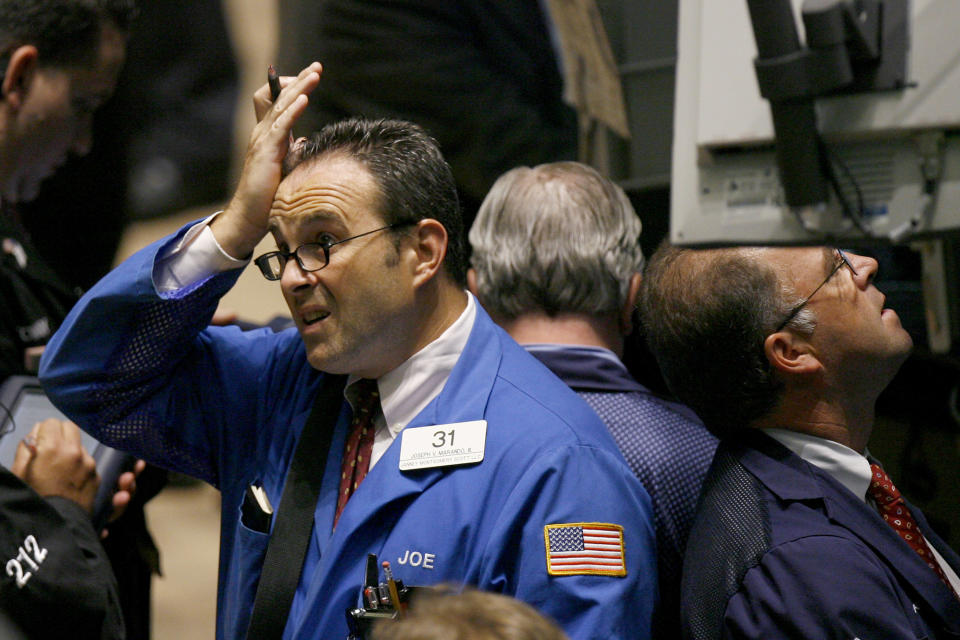Retirement expert: The ‘4% rule is no longer a safe withdrawal rate’
Given the recent stock market losses and rising fears of recession, retirees shouldn’t bet on the traditional 4% withdrawal rule for their retirement savings, experts warn.
The rule refers to the percentage amount that financial advisers recommend retirees should withdraw from their portfolio on an annual basis.
“The 4% rule is no longer a safe withdrawal rate, and retirees may need to save more money or readjust their income projections,” said Alexander Koury, a certified financial planner at ValuesQuest, a financial consulting firm. “Markets are in a bear market, annual projected returns have been lowered, and therefore retirees might not make enough money to replace the income they need.”
What is a safe withdrawal rate now?

While withdrawal rules aren’t set in stone, some financial experts recommend a future rate ranging from 3% to 3.5% as the rule of thumb.
“The new rule at least for the decade may be under 3%, given bond rates and relatively low dividend yields,” said Scott Bishop, executive vice president of financial planning at STA Wealth Management. “There’s possibly a suspension in some companies’ ability to pay dividends until the economy recovers.”
A dividend is a distribution of profits by a company to its shareholders. When a company earns a profit, it can pay part of that as a cash or stock dividend to shareholders. Delta Airlines to Boeing are some of the companies which have suspended dividend payments.
Look at your individual cash flow
At a time when 6 in 10 non-retirees believe they’ll run out of money before they die, according to Allianz, the best withdrawal rate may not be a one-size-fits-all percentage, said Joseph Romano, founder of Romano & Romano Financial.
“The retirement withdrawal rate should be based upon an individual's cash flow needs, their strategic asset allocation, and account inflation.” Romano said. “Since Americans have been retiring at younger ages and living longer, this type of cash flow planning is critical.”
Cash flow analysis refers to how much you’re preserving from income received from work, investments or gifts after your debts have been taken into account.
‘Create a job layoff checklist’

Before sitting down with a financial planner to determine your withdrawal rates, take a few key steps on your own to determine your needs.
“If you are five to 10 years away from retirement and have been recently laid off from your job prematurely, the first thing you should do is create a job layoff checklist,” said Jon Ulin, managing principal of Ulin & Co. Wealth Management. “This will help to help increase your income, decrease your expenses and provide a window of time with your cash reserves to potentially reenter the workforce or create your own company to help deter retiring before your intended date and age.”
Thelist should include to-do’s such as creating a budget, eliminating unnecessary recurring obligations, and deferring debt payments that banks are offering as part of disaster relief.
It may take a while before you can recoup your lost retirement savings.
“There is no free lunch right now,” Bishop said. “High quality and government bonds pay little yield and even annuity yields aren't very good for those that want guaranteed income.”
Dhara Singh is a reporter at Cashay and Yahoo Money. Follow her on Twitter at @Dsinghx.
Read more:
Coronavirus stimulus package makes it easier to tap your retirement savings
Mortgage refinances hit 11-year high as coronavirus fears send rates tumbling
Read the latest financial and business news from Yahoo Finance and Yahoo Money
Follow Yahoo Finance on Twitter, Facebook, Instagram, Flipboard, SmartNews, LinkedIn, YouTube, and reddit.

 money
money 